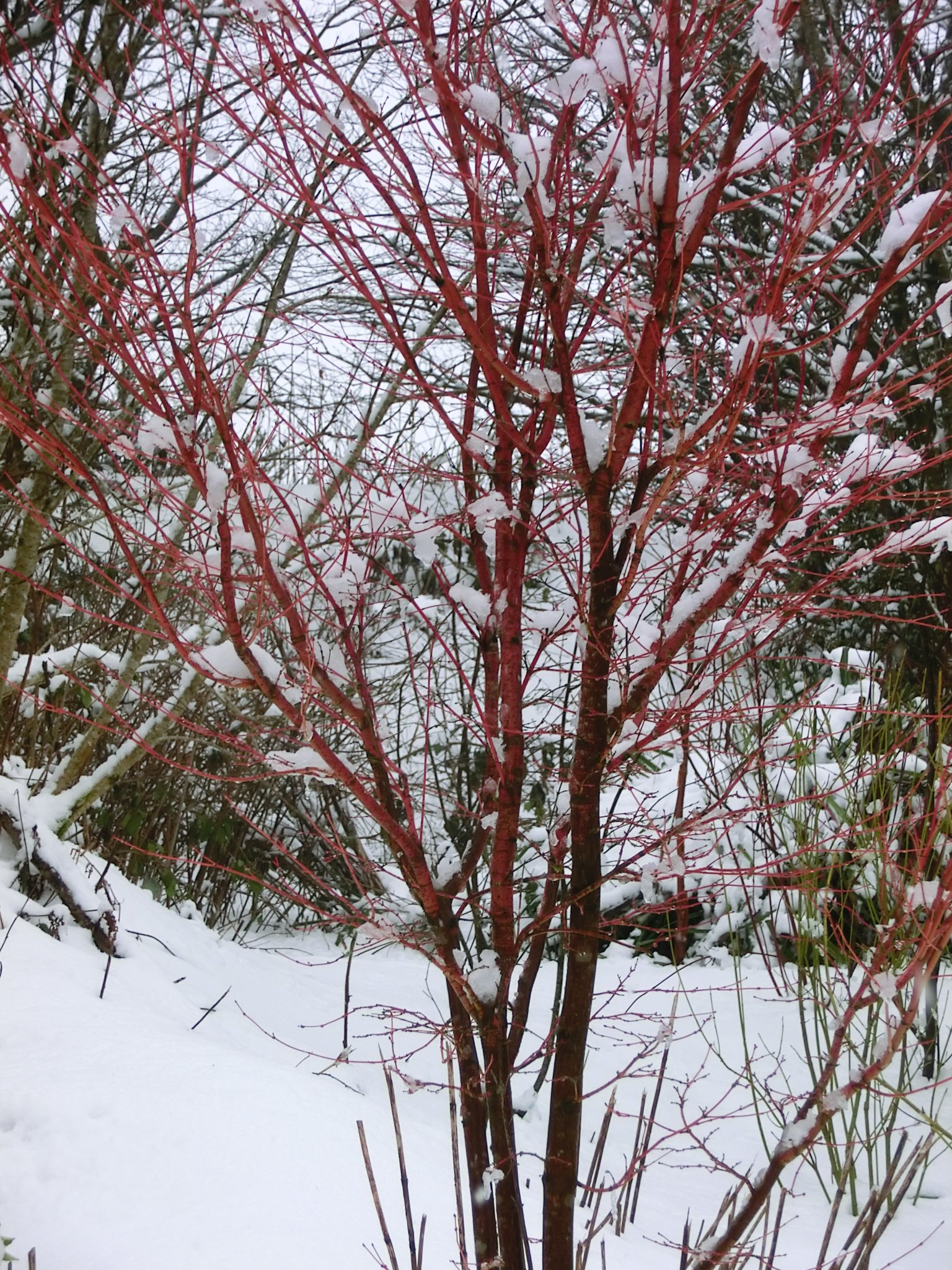Snow and wind damage: things to do in your garden now!
Snow and wind damage in gardens may not have been your biggest worry during weeks of very bad weather. But as the weather improves, the sight of battered plants and sad garden spaces isn't what we want. And there are things you can do NOW, and as the weather improves, to reduce the risk of snow and wind damage to your plants.

After brushing snow from branches, this 'eleagnus' is a beacon in this snowy border. And the risk of damage to its branches has been reduced. Sarah Buchanan
Snow and wind damage: ten top tips for action
What to do now
-
- Take photos of pretty scenes. Even if you are fed up with the snow now it is worth it for a record of your garden through the year.
- Gently knock or shake snow from the branches of evergreen trees and shrubs. The weight of snow can break branches, especially when it starts to thaw. And strong winds on snow laden branches cause breakages too. Gently pull up branches that have been weighed down and loosely tie them around the tree or shrub in their right shape.
- Check that ties and stakes on young or tender trees and shrubs are firm. Strong winds may loosen them, leaving plants vulnerable to wind damage. As the weather warms up, check that the soil around a staked plant is firm - press it down with your foot.
- Check that any fleece coverings over tender plants are not weighed down with snow. Shake the covering gently, or remove and replace it.
- Keep off the grass! Walking on snowy, frosted and (soon!) wet grass damages it and can compact the soil, If you can't avoid it and end up with messy grass on compacted soil, read our recent blog .
- Brush snow off greenhouses, cold and fruit frames and other gardens structures. The weight of snow may cause damage.
- If you haven’t already done so, cut back long spindly stems on roses. Strong winds will otherwise rock the plant. Wait for better weather for full spring pruning.
What to do after the thaw starts
- If your favourite plants are damaged by frost, a rapid thaw won’t help. Early morning sun often causes most damage. So, cover frosted plants with black plastic, which blocks out the sun, until later in the day (cover them up at night). After the thaw dig up small and young plants. Move them under cover for TLC. Cut back frosted stems and branches to a healthy, new bud. Feed damaged plants with a balanced fertilizer.
- After it is all over, take stock of what thrived and looked GREAT. Choose hardy replacements for plants that died or were damaged beyond repair.
- Don’t try to plant anything while the ground is frozen or waterlogged in a thaw. The plants won’t thrive and you won’t enjoy the experience!
Sign up for our emails below, so we can send you blogs on gardening tips, as well as updates on our sales, so you don’t miss out on those garden furniture bargains!











